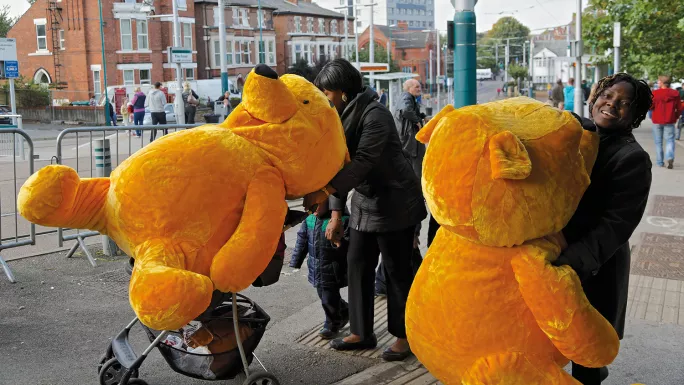Tes focus on...How to improve early years education

Everyone has an opinion on early years education at the moment. As the attainment gap between disadvantaged children and their peers became increasingly clear under the focus of the government’s social mobility aims, and the efforts higher up in the schooling system repeatedly failed to meaningfully close that gap, attention inevitably turned to interventions at ever younger age groups: predominantly at early years foundation stage (EYFS). With that concentration came a great deal of criticism.
Much of it has been targeted at the teaching: Ofsted’s highly controversial Bold Beginnings report outraged many in the EYFS sector with its recommendations on pedagogy, and there has been plenty of debate about the efforts to introduce a baseline assessment in the Reception year. The Early Learning Goals are also being looked at, with new recommendations being piloted from this month (bit.ly/LearnGoals), and schools have been urged to provide education interventions for children as young as 2 through parent outreach programmes.
But all of these things are, according to Naomi Eisenstadt, missing the main issue.
“There is a huge amount of work that has gone into things like the new Early Learning Goals, but my view is that unless you do something about pay and conditions in the early years, nothing is going to help,” she says. Eisenstadt has a unique view on the sector. After working in nurseries and for children’s charities, she ran the Sure Start programme for the Labour government from the late 1990s, spending seven years in roles that culminated in her becoming the secretary of state’s chief adviser on children’s services, and then director of the Social Exclusion Task Force.
More recently, she has advised the Scottish government on poverty and inequality.
For her, if you want to make a real difference to early years settings, the main concern for now has to be who is doing the teaching in the pre-school phase.
“We are not attracting the right kind of people to teach in the early years. In fact, a significant proportion of people in the early years workforce are not even on the [higher tier] national minimum wage, which kicks in at 25,” she explains.
This, combined with a lack of graduates in early years settings, is the key problem with provision: wages are too low, the entry bar to entering the profession is not high enough, and therefore any potentially beneficial government reforms are not being implemented effectively, she says.
“A previous childcare minister, Liz Truss, did say that to go into early years you should have minimum C grade in English and maths at GCSE level - and I think that was a really good policy. But they have rolled back on it because the sector thought that was too high a bar,” Eisenstadt explains.
“Currently, the government is quite rightly making a big play of the importance of language development in the early years, and they are right - it is really important. But I challenge you to say how you encourage really high-quality language development with people who think that a C grade in English is too difficult for a worker.”
According to the National Day Nurseries Association, there are now almost 20 per cent fewer Level 3 qualified practitioners within the day nursery sector than in 2015, while figures from the charity Save the Children show a shortage of nearly 11,000 qualified early years teachers in England. This, it says, means some 300,000 children are going without the support they need.
Some schools have taken control of feeder pre-schools and put qualified teachers in charge of the learning, but such a move is not easy, says Eisenstadt.
“I do see Reception as the final year of the early years foundation stage, and being teacher-led in the classroom with the children is [an] excellent [approach],” she says. “Connections with schools is a good thing.”
However, she does express some concern about imposing school-level teaching approaches on to younger pupils.
“I worry that we have consistently pushed formal education learning principles down into pre-school settings, rather than pushing more early years principles up [into the first years of primary],” she says. “When I first went to work for Sure Start in 1999, I went to what was then the Department for Education and Skills. I remember thinking, ‘They think children are born at five years old here.’ By the time I left, I think they thought children would be born at 3.”

Eisenstadt warns that primary schools taking control of preschools will also face the big challenge outlined earlier in this article: the staff actually doing the teaching. “The problem is, getting better qualified teachers in nursery settings is very expensive, even though it works,” she says. “But the way that you keep childcare costs down is by paying the people who are working in childcare less.
“My favourite management theorist is Henry Mintzberg, and he wrote about how the lower the entry barrier to an area of work then the higher the job specification; so the more training you need to do to get into a job, the more control you have over it once you are in. I think what we have consistently done in early years over the years - including myself when I was in the department - is we have kept entry barriers very low, and tried to substitute that by being very clear on work specification. In my opinion, that doesn’t work.”
One of the problems, she says, is a mismatch - a breakdown in communication - between what the people at the top, such as policymakers and academic experts, believe will bring about improvements, and how these ideas are then communicated to staff on the ground.
“One of the things you learn in the nursery is cooperative play: sharing with other children, empathising - a lot of skills that are really important. The Early Learning Goals have all that: there are things about attention to others, and self-regulation, so it is not that they are missing, but it is about making it work.
“For example, I looked at the latest draft of the goals, and some of the words used in the maths ones were words that I didn’t understand myself. So the way the goals are expressed can be really quite difficult language that a grade 2 nursery assistant wouldn’t necessarily know.”
Ideal scenarios
Eisenstadt is clear that she believes there are currently many very capable and effective people working in the early years - however, she is adamant that increasing the number of graduates would make a huge difference to early years attainment. “Unfortunately, the government has just rolled back on its intention to increase the number of graduates in early years settings,” she laments.
Eisenstadt says she knows what the early years workforce should look like: more better-paid, graduate-level teachers (although as “a pragmatist” she acknowledges that this is an expensive and politically difficult path to take). But what does she believe early years settings should look like? Should children be sat at desks from a very early age, or left to play freely and lead their own learning?
“I am no expert on this, I should say. But, of course, I do have views on what should happen in early years classrooms,” she says. “Personally, I think, particularly for under-1s, but even for 1-2s, I would pick childminders every time, rather than nurseries.
“I think domestic care is better for babies, and I think it is interesting that this is what the richest people do; they have nannies. I think we have undervalued childminding, and I think we have over-bureaucratised it, which was a mistake that I made when doing early years at the Department for Education.”
The error, she says, was “trying to have an equivalence between group care and domestic care”.
“What we should have done was concentrate on supporting childminders through what we know about the home learning environment, not through what we know about early learning goals.”
For two- and three-year-olds, Eisenstadt is in support of a mixture of domestic and group childcare settings, favouring shorter, three-hour sessions in nurseries, giving children “an intense cognitive experience”.
One of the most important things, though, is consistency. “A childcare setting is primarily about enabling adults to go back to work, so you have flexible hours,” she says. “Some children come a few days a week. Can you imagine an eight-year-old saying his mother is working part time so he is only coming to school on Tuesday and Friday? This is what we do in early years all the time, and yet, for a three-year-old, some continuity - knowing who the staff are, knowing the other children - is really important.”
Eisenstadt believes that a combination of family support and childcare - whether in a children’s centre, a nursery or with a childminder - is the best approach for preschoolers, but she is worried that current government policies are putting access to such services at risk.
“My bugbear is that I think all the talk about early intervention in terms of parenting and parenting support is completely empty rhetoric when they keep closing children’s centres,” she says. “It is ridiculous. It’s also ridiculous in terms of how much we spent on evaluation of what works, and now we are ignoring it. It is not a good picture.”
Ultimately, she thinks that getting the right balance of educated and passionate professionals into early years settings is the route to closing attainment gaps, and helping children to be as prepared as possible for school when they turn up for their first day in Reception.
“My granddaughter is three and a half, and has just started talking about the past and the future. It is really interesting. I get excited just talking about it. The joy of working with young children is to conceptually think about how difficult that is for a three-year-old, and how we take it all for granted that we understand these things. I would like the people working with young people to be as excited about that kind of thing as I am.
“That is not to say I think they aren’t good, nice people. It is just that we need people in the classroom with the kids expanding that kind of language - especially with the more disadvantaged kids, who might not get that kind of extension at home.”
Chris Parr is a freelance journalist
You need a Tes subscription to read this article
Subscribe now to read this article and get other subscriber-only content:
- Unlimited access to all Tes magazine content
- Exclusive subscriber-only stories
- Award-winning email newsletters
Already a subscriber? Log in
You need a subscription to read this article
Subscribe now to read this article and get other subscriber-only content, including:
- Unlimited access to all Tes magazine content
- Exclusive subscriber-only stories
- Award-winning email newsletters